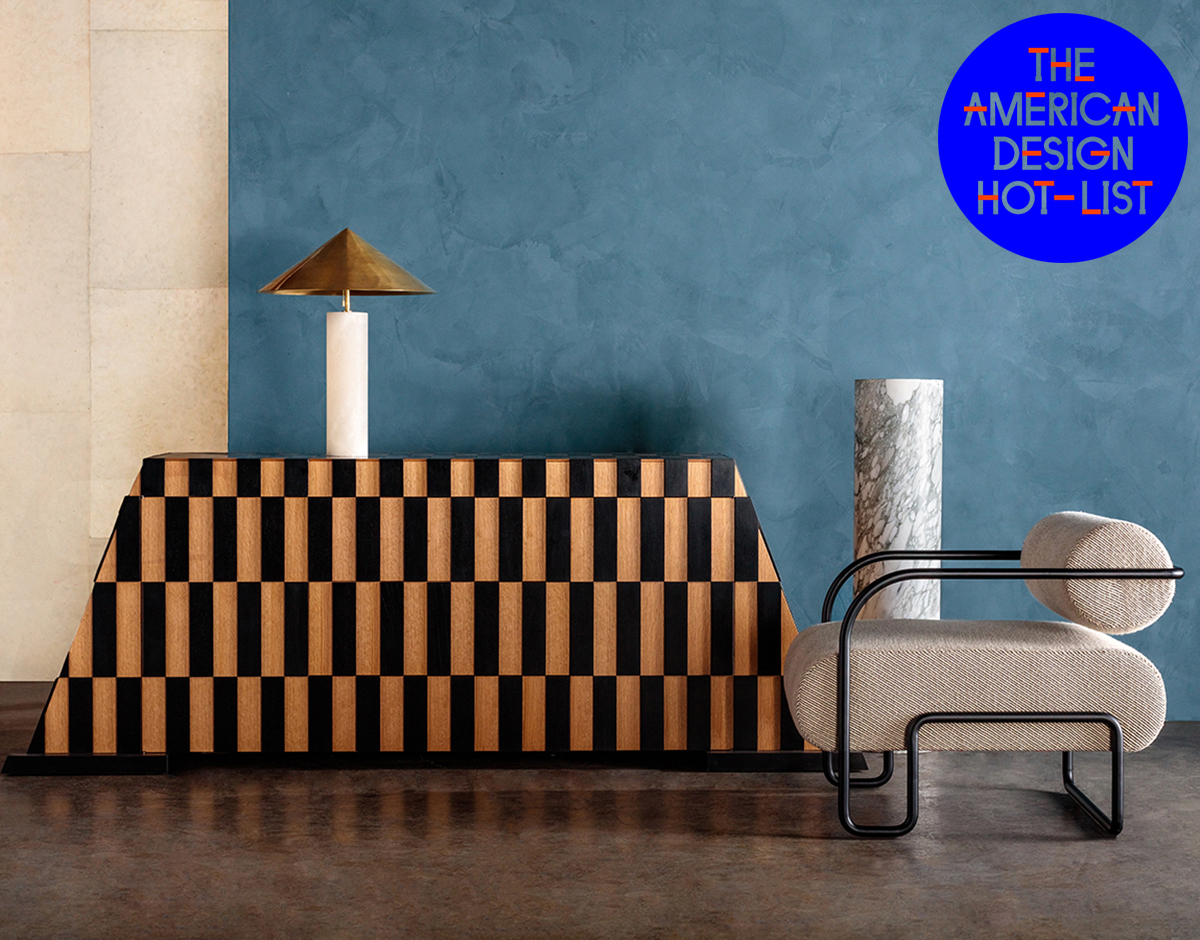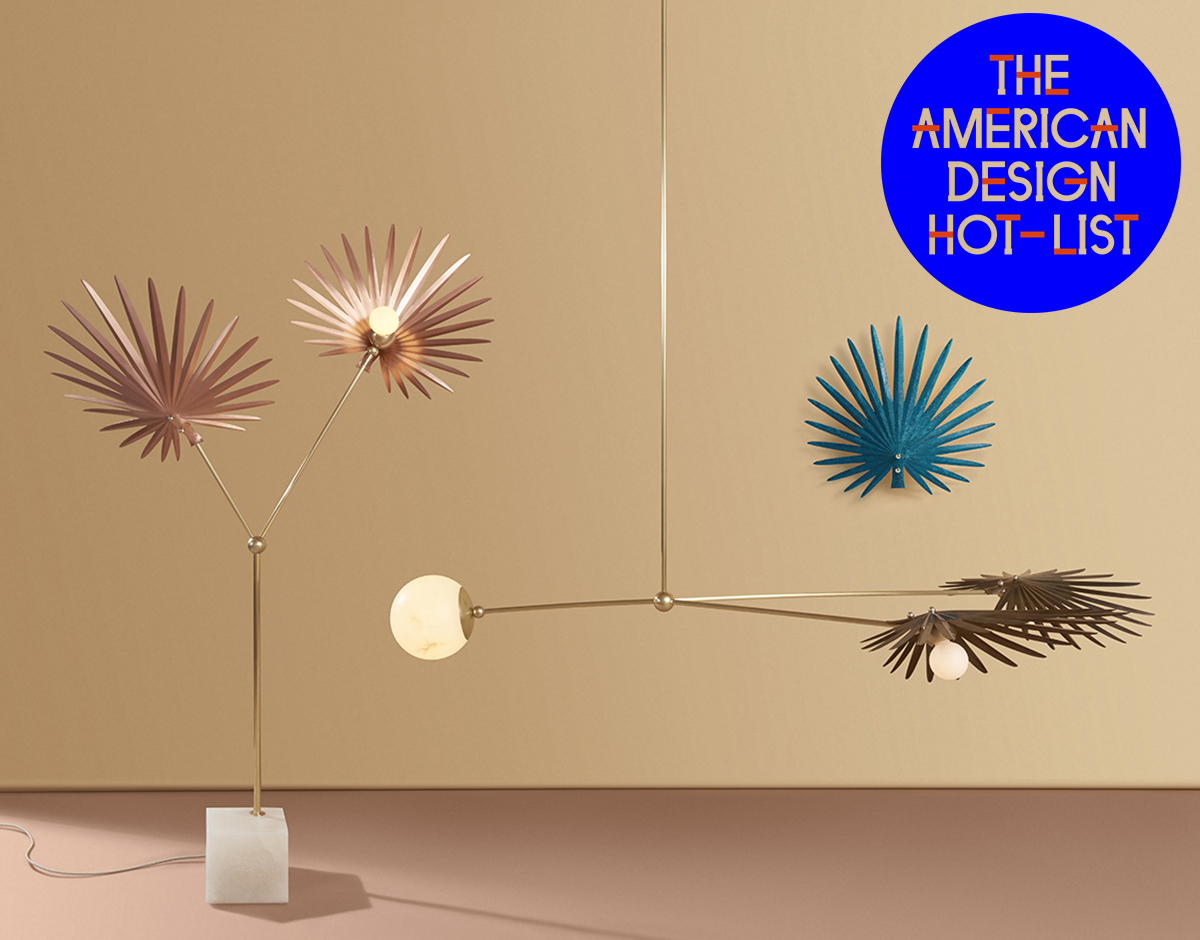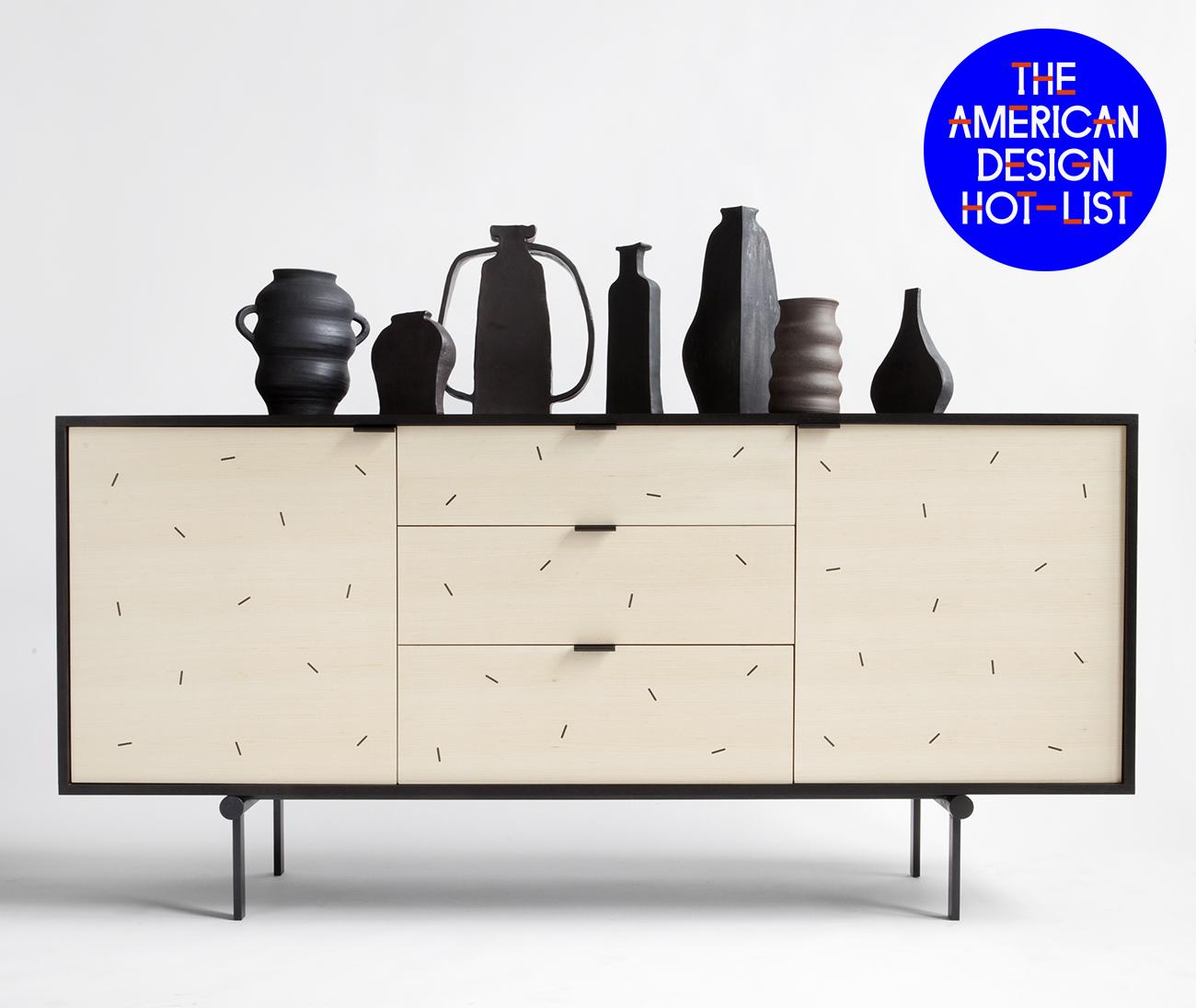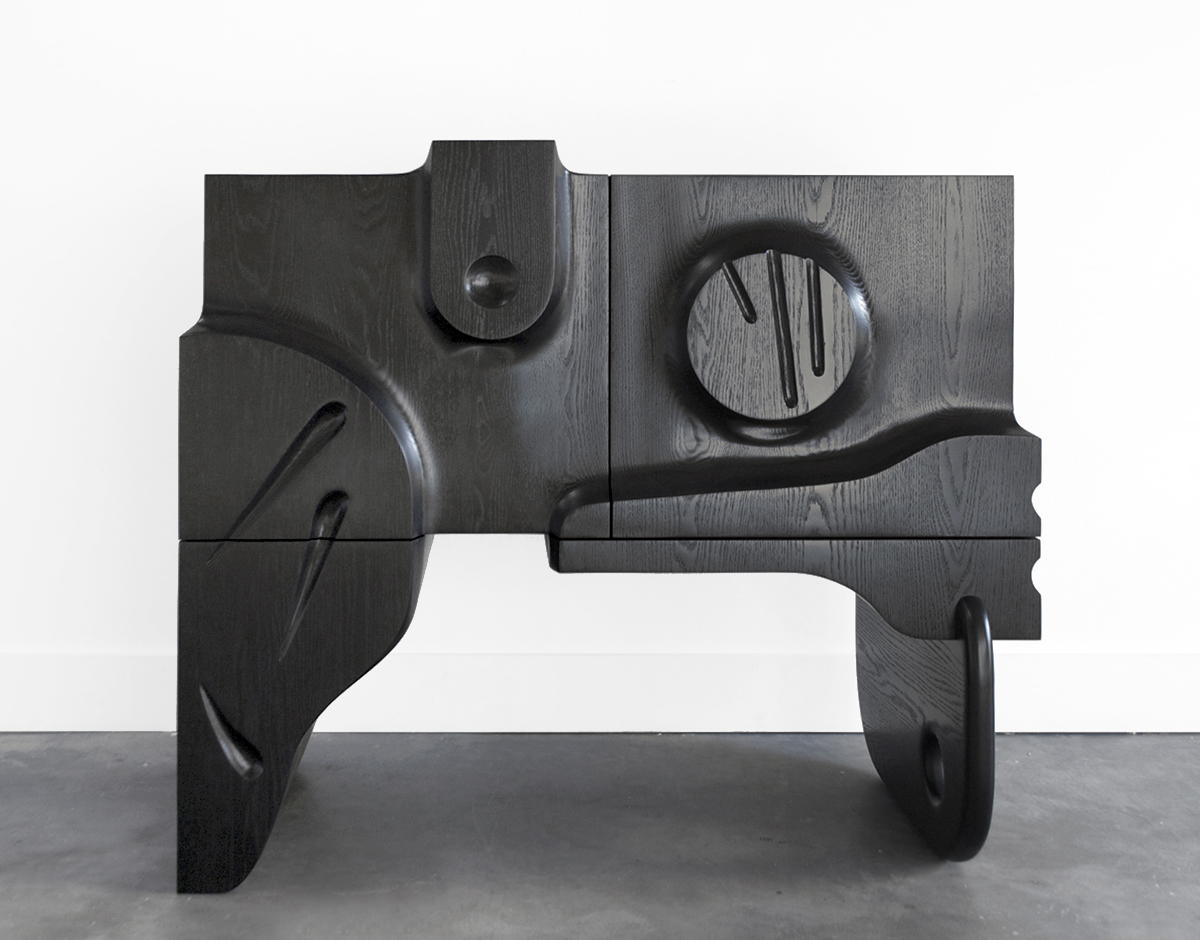
12.07.20
American Design Hot List
The 2020 American Design Hot List, Part I
This week we announced our eighth annual American Design Hot List, Sight Unseen’s editorial award for the names to know now in American design. We’re devoting an entire week to interviews with this year’s honorees — get to know the first three Hot List designers here. (Pictured at top: cabinet by Casey Johnson Studio)
Campagna
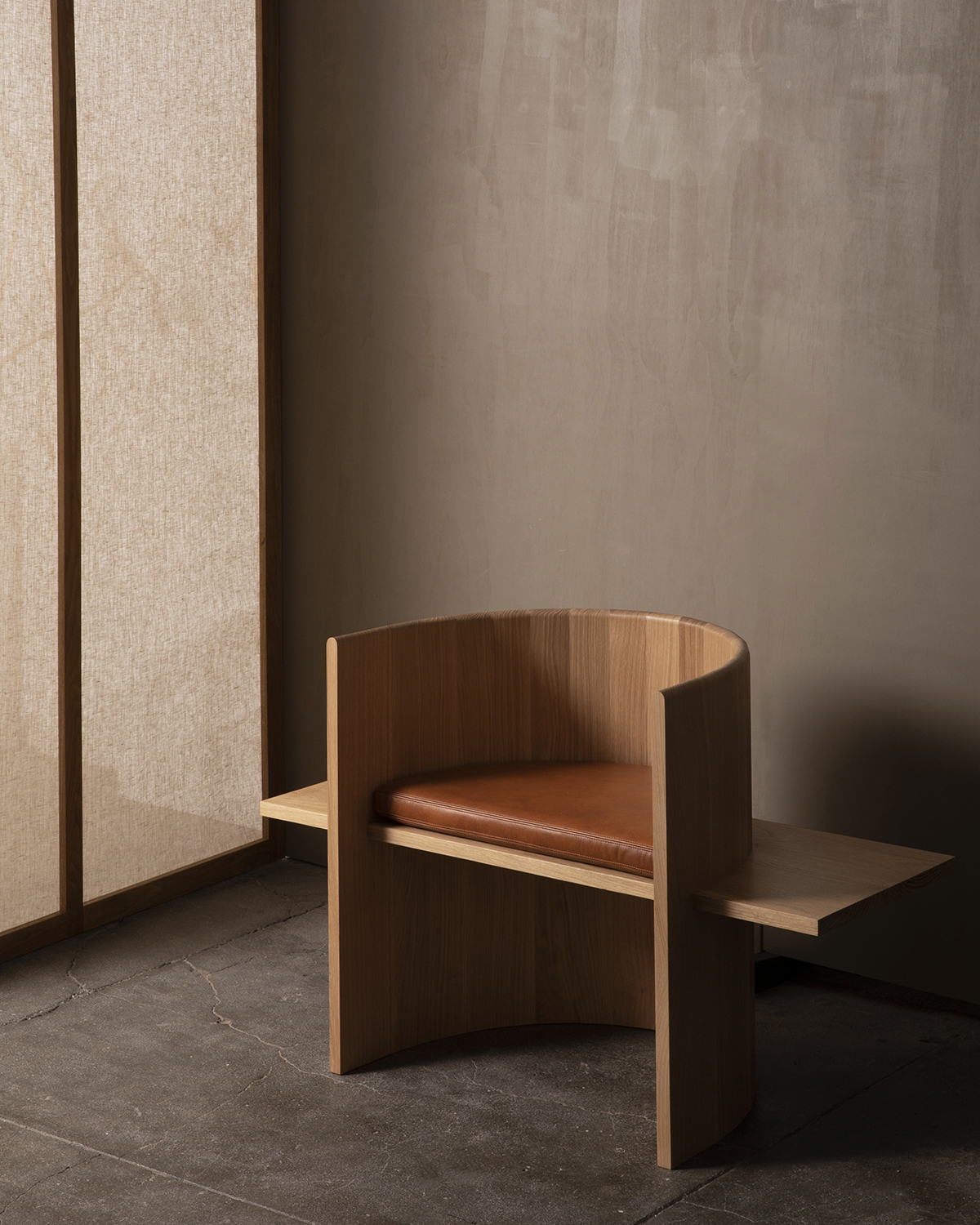
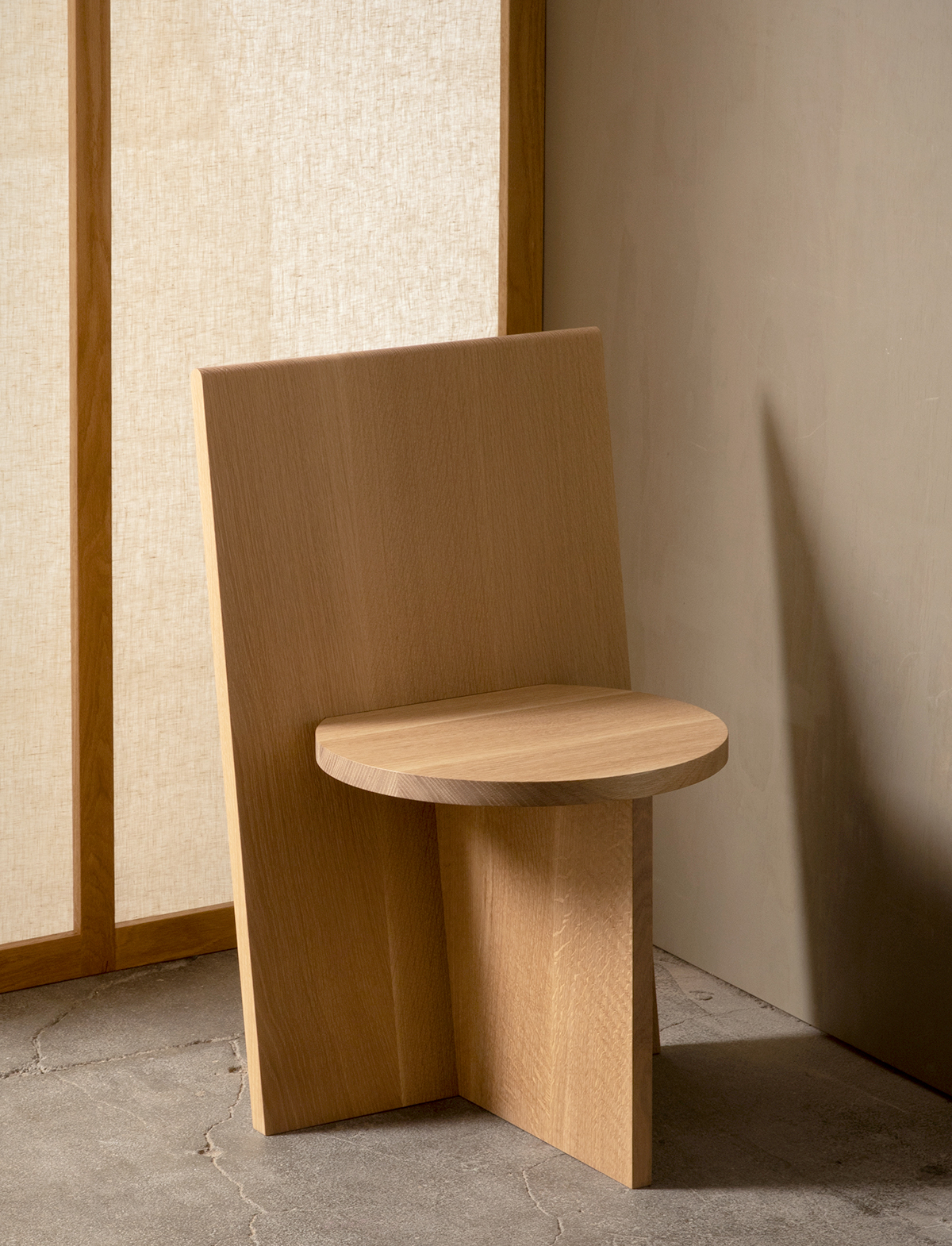
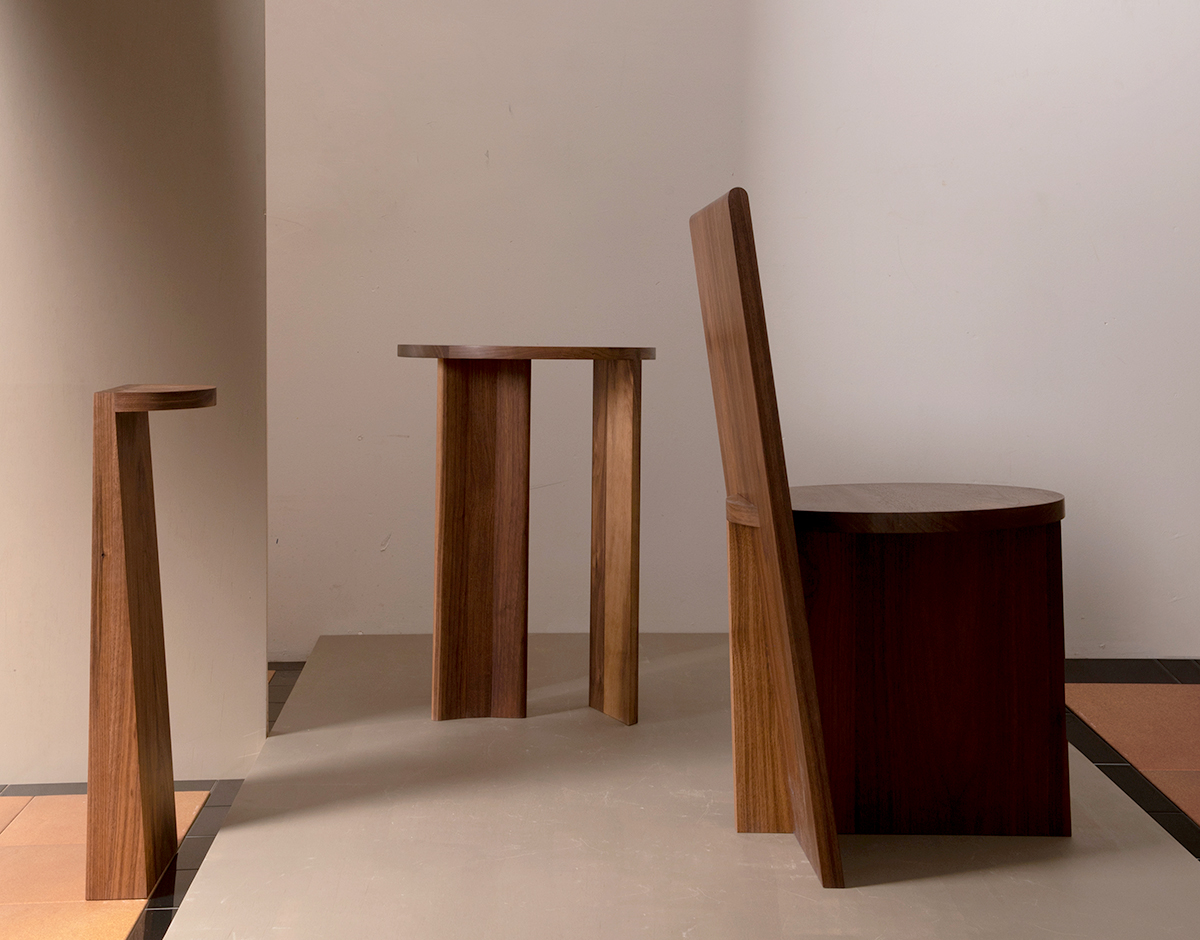
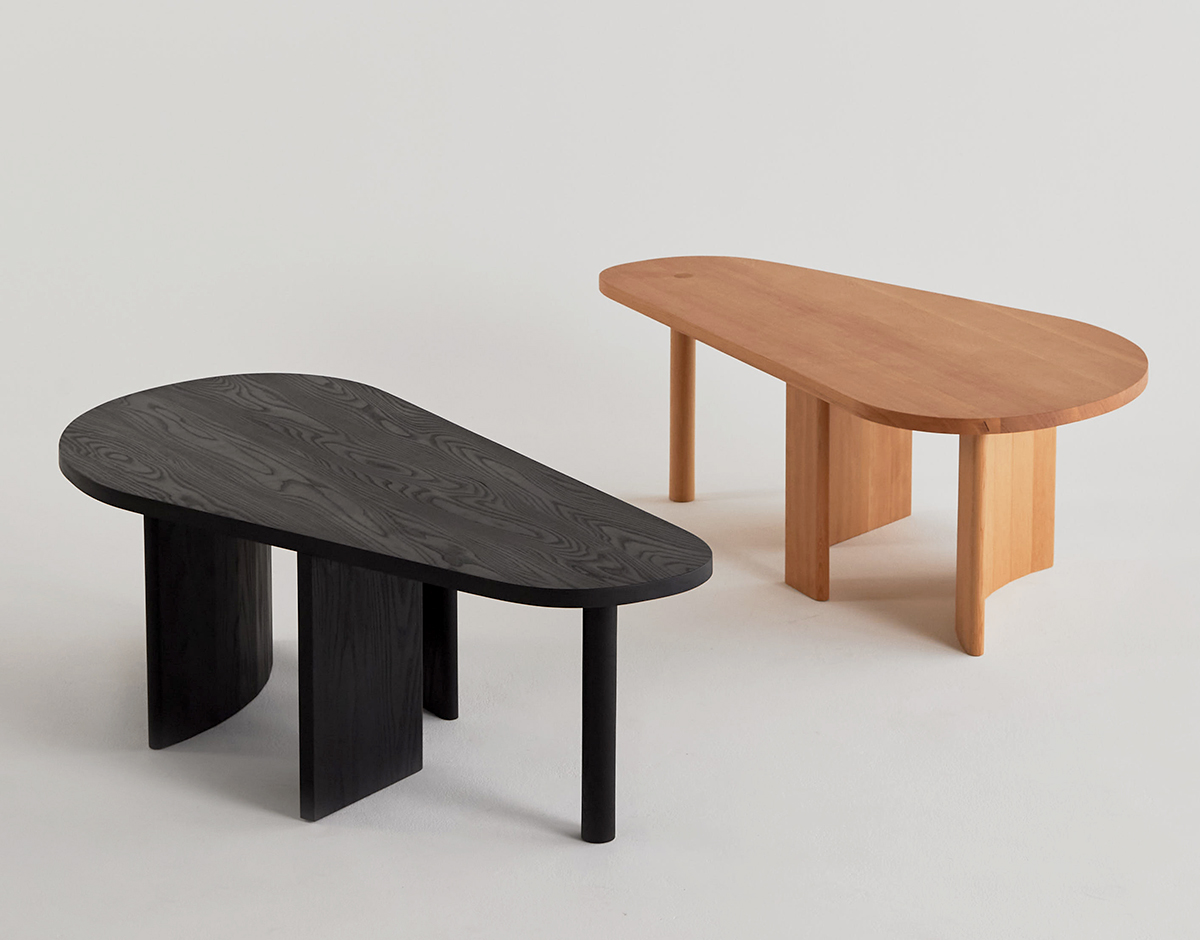 Portland, Oregon, campagna.cc
Portland, Oregon, campagna.cc
Many independent furniture designers get their start working in wood simply because it’s an easy-access, no-minimums-required material. For Cody Campanie, though, it’s a birthright — he’s a third-generation woodworker who grew up amidst makers in rural New York, and went on to form a studio around bringing his subtly edgy aesthetic to the traditional craft.
What is American design to you, and what excites you about it?
It’s difficult to discuss what American design is without acknowledging the complexity of American history and how American creativity has been born from eras of conflict and contradiction. For example, Josef Albers, who taught at the Bauhaus and sought refuge in the U.S. after leaving Nazi Germany, was appointed a teaching position at Black Mountain College in North Carolina with the help of architect Philip Johnson, a Nazi sympathizer. Here, Albers mentored the sculptor Ruth Asawa, who was held in an internment camp on the west coast by the U.S. government because she was Japanese-American. This highlights the entanglement of politics and our identity as a country of immigrants with American existence and American design.
Once again, we’re in an era of stark conflict and contradiction. But within the pain of the last year, there have also been reasons for excitement. There’s a growing awareness and support of young, talented designers from many backgrounds who are pushing against existing structures and norms. People have a renewed understanding of the importance of craft and quality and are backing small businesses and artisans who make things with their hands. This reading of American design is less about an aesthetic, but more in keeping with an expression of our ever-evolving understanding and criticism of the complexity of our nation.
What are your plans and highlights for the upcoming year?
Over the last year, I’ve been collaborating with my friends at the architecture and design studio Anderson Su on a cabin located in a very special place: Orcas Island in Washington State. We’ve constructed the entire cabin from the ground up (literally, pouring the foundation) and are set to finish early in the new year. It’s been an incredible experience to work at a larger scale while keeping a high level of detail in the craft. From the roof to custom furniture pieces that will be housed within, the entire structure feels like building one big, intricate cabinet.
In addition, I’m looking forward to creating some new pieces from materials other than wood that call upon the skills of some of the incredible craftspeople I’ve met since moving to Portland. I’m also really looking forward to seeing the breadth of thoughtful work that my friends will release in the coming year.
What inspires or informs your work in general?
As of late, I’ve been thinking a lot about the writer Kiese Laymon’s notion of revision. In it lies the importance of honest self-assessment of not only our craft, but our lives and the world around us. This is reflected in the way in which so many influential craftspeople of all kinds pursue their work, from surgeons to bread bakers, writers, and athletes. I’m inspired by the concept that by committing to honing our craft, our craft becomes a part of us, and we are in turn honing ourselves.
I’ve also been revisiting photos from past travels for both comfort and inspiration. Though most of these pictures are of shadows and the corners of things, there are a few specific ones I keep coming back to: the noodle-like texture of Saint Anthony Abbot’s beard hair in Giovanni di Nicola’s painting from 1326, the quality of light coming through the tiny arched windows of the Little Metropolis chapel in Athens, and the simple detail in the cuticles on an Egyptian two-finger burial amulet from around 500 B.C. Studying and drawing parallels between these disparate historical references has helped get me out of an often strict and rigid process that I previously used in designing new work.
Casey Johnson
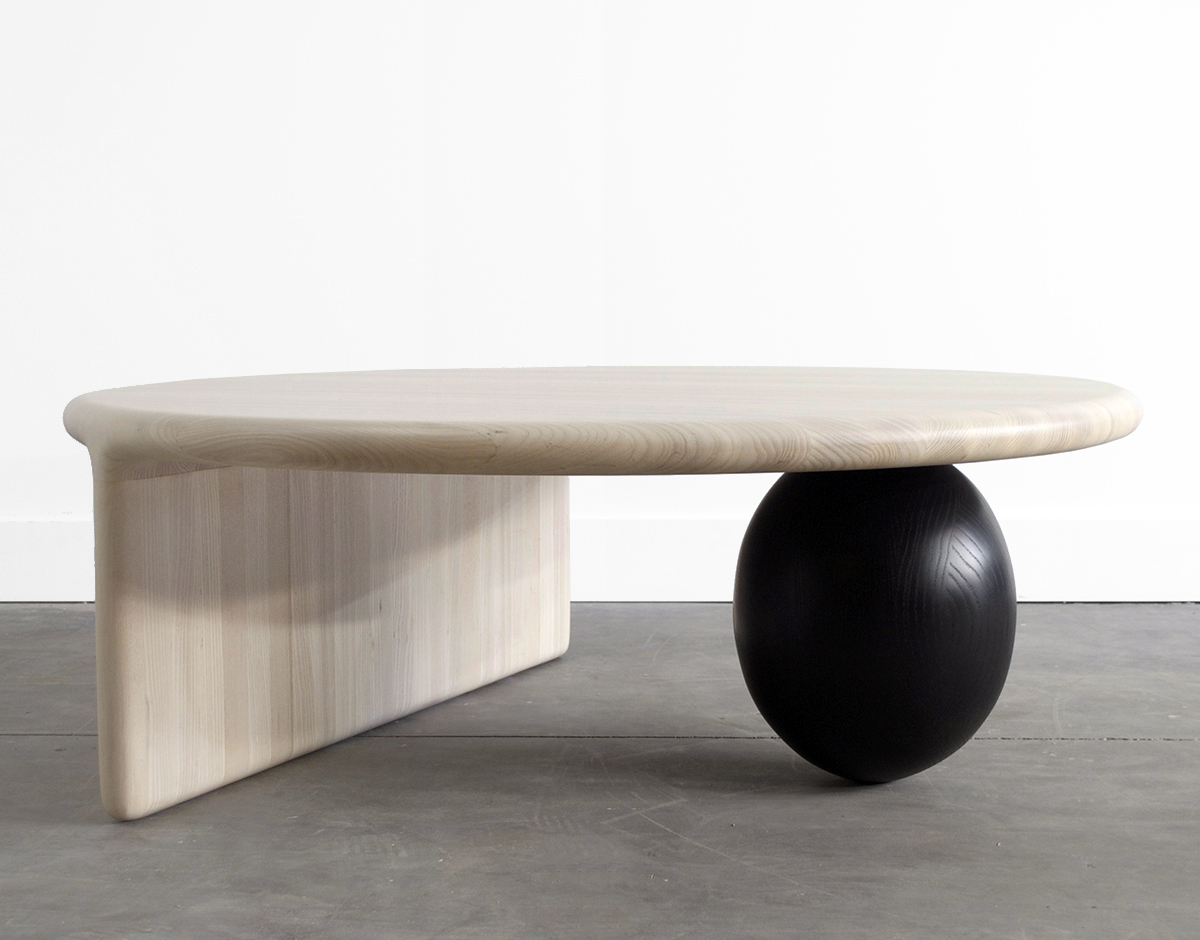
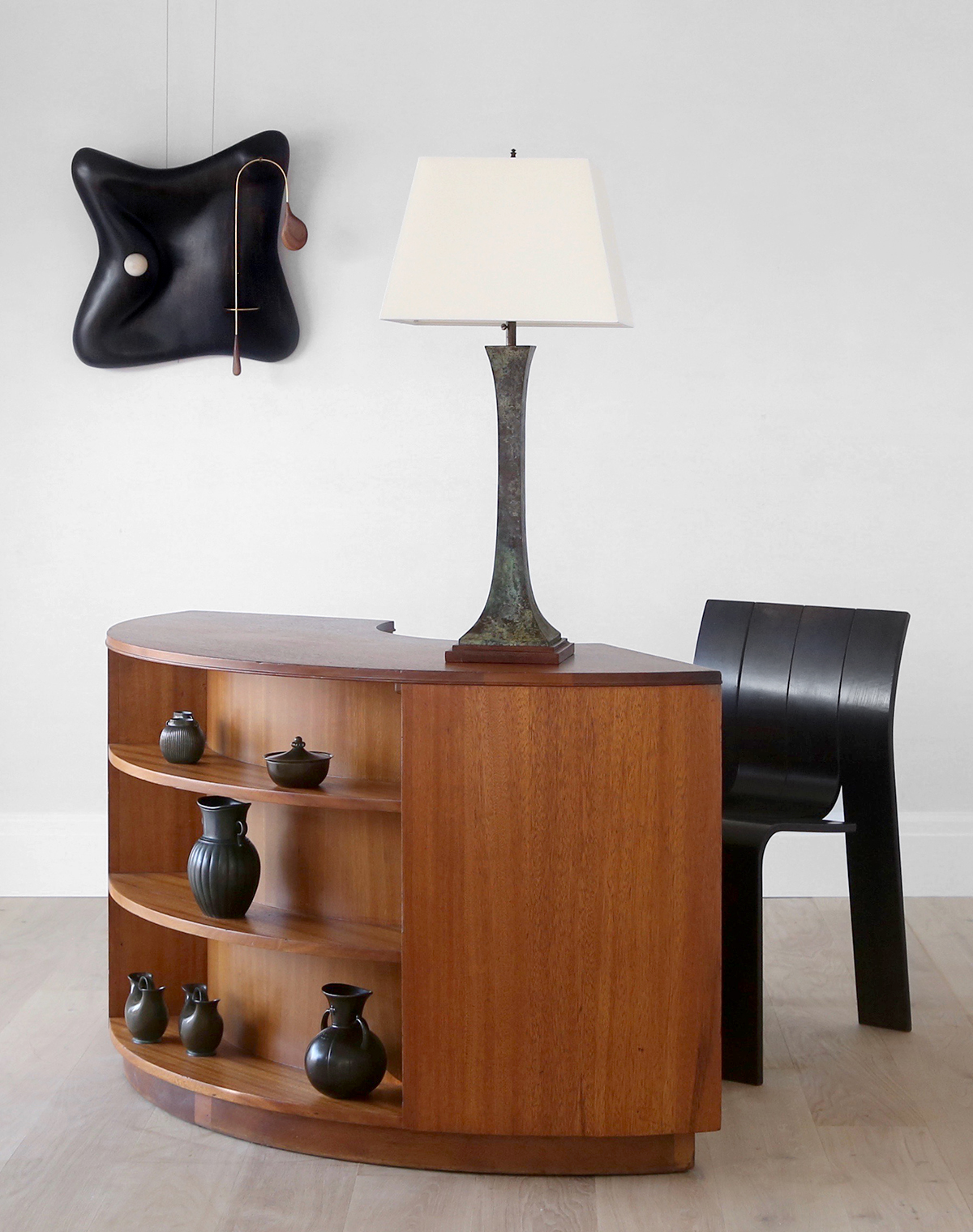
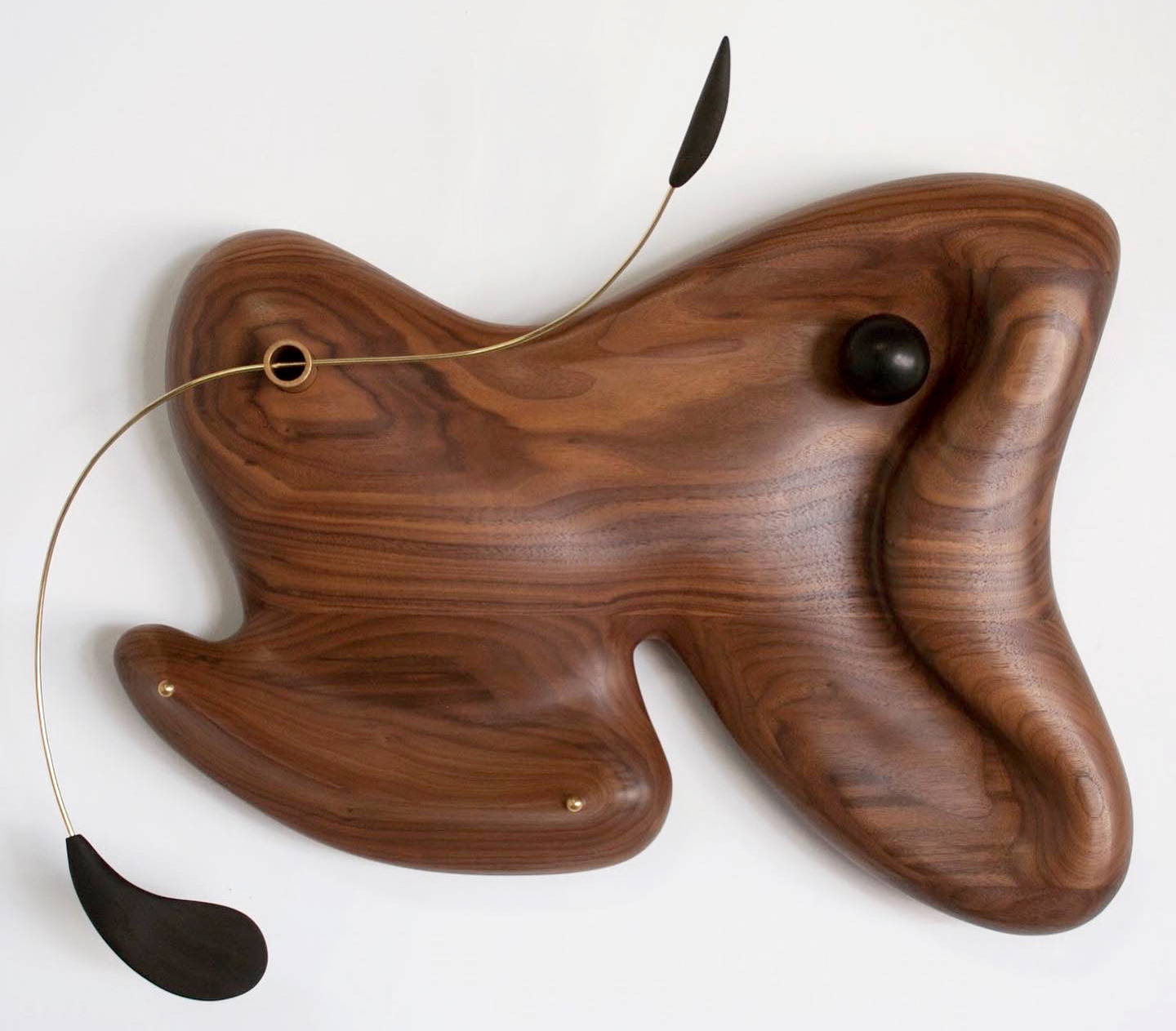
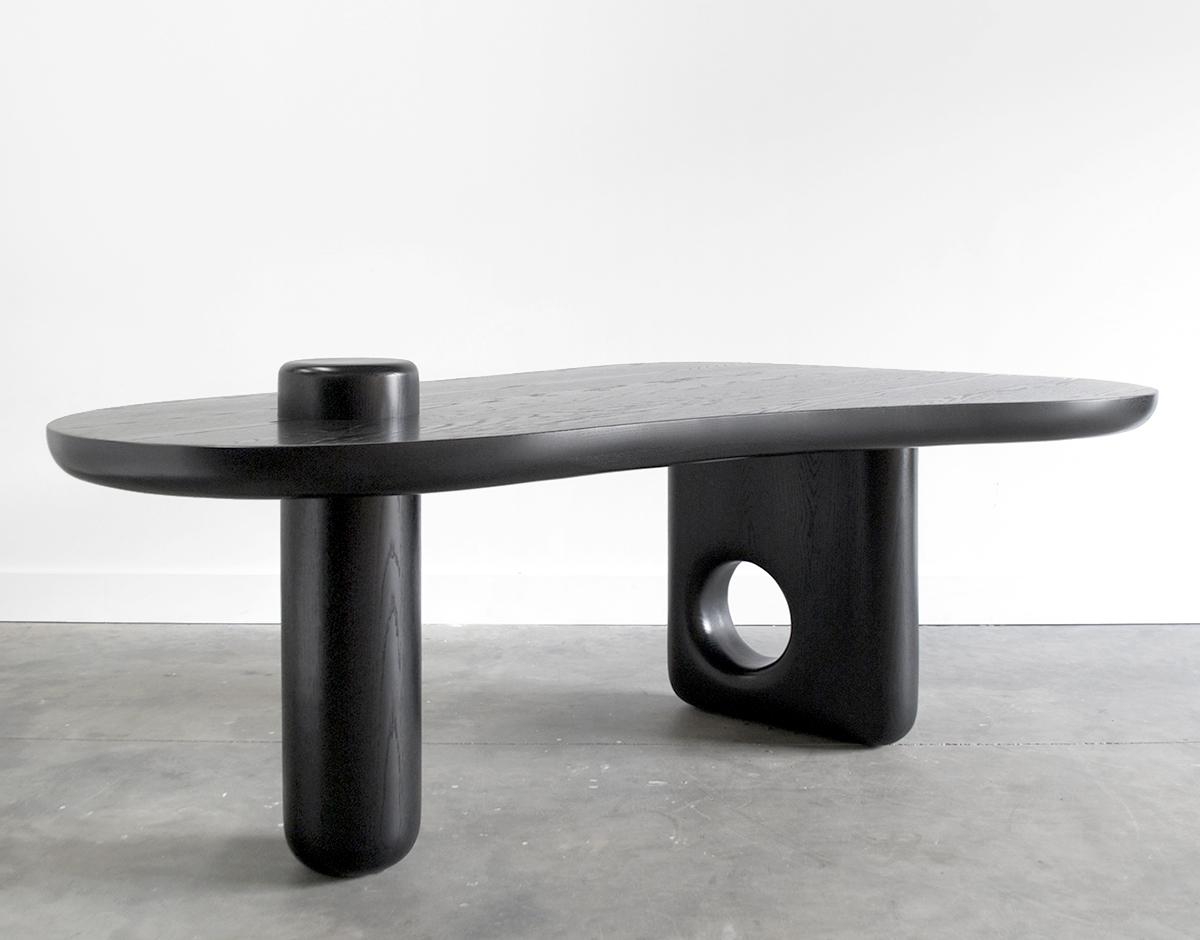 Asheville, North Carolina, caseyjohnsonstudio.com
Asheville, North Carolina, caseyjohnsonstudio.com
More of a sculptor than a furniture designer, Casey Johnson started out making small curvilinear wood objects and more conventional furnishings five years ago, then slowly began exploding his practice into elaborate and extremely cool large-scale cabinets and tables that are sometimes Noguchi, and sometimes Noguchi on acid (in the best possible way).
What is American design to you, and what excites you about it?
When I think of the American Designer, I picture Evel Knievel or some other stunt person on a motorbike soaring over some kind of impossible stunt (cape and all). Someone who’s constantly taking risks and not afraid of trying new things. It’s that adventurous spirit I see when I look at other American designers I admire. I don’t think you can really nail down American design, and that’s what’s exciting. Since we’re such a diverse group with so many cultural influences overlapping and blending together, there are constantly new ideas emerging. There are no rules, but there IS dedication and commitment to craft. Pushing the limits. This is our strength.
What are your plans and highlights for the upcoming year?
2021 will hopefully be better for us all. I don’t think I can speak to the upcoming year without acknowledging how challenging this year has been for so many. We’ve all felt the burden of this year one way or another. Whether it’s been emotional, physical, spiritual, financial, or a combination of all those, we’ve all been tested in ways we didn’t expect. We could all use a year to heal from the present one.
My plan this next year is to have more fun and work more intuitively. There will be more sculpture coming out of the studio next year. I will continue to take on commissions but will also be focusing more attention on developing new sculptural forms and exploring new materials.
Outside of just plans for my work, I plan to be more present to the people around me. To spend more time walking in the woods, on the mountain, and sitting by the stream. To slow down, and focus on the things that I’ve learned this year are truly important to me.
What inspires or informs your work in general?
True inspiration for me comes when I’m not looking for it. Not to say that my eyes shouldn’t be open to see, I’ve just found that the more I try to find inspiration, the further I get from the honest stuff. It’s so easy to find yourself lost in an unlimited network of inspiration on IG and other social platforms, but the real stuff comes when I happen upon an interesting rock or stick on a hike, or when I stop to watch the wind dance through the leaves of the trees outside my studio. Or when my 6-year-old shows me one of his drawings when I get home. Or when I’m out running errands and come upon an interesting composition of everyday objects. It’s easy to get caught up trying to search for the next idea, but when I stop trying to have a cool idea, one normally presents itself, sometimes in the most subtle of ways. It’s being present to life outside the studio that gives me the true inspiration. The real stuff. This is what I strive to be better at.
This is not to discredit those artists who I truly admire and whose influences have set a stage for me to play on. Artists like Brancusi, Noguchi, Martin Puryear, and the late Wendell Castle, to name a few. These artists have greatly informed how I approach my work and have inspired some of my techniques.
John Eric Byers
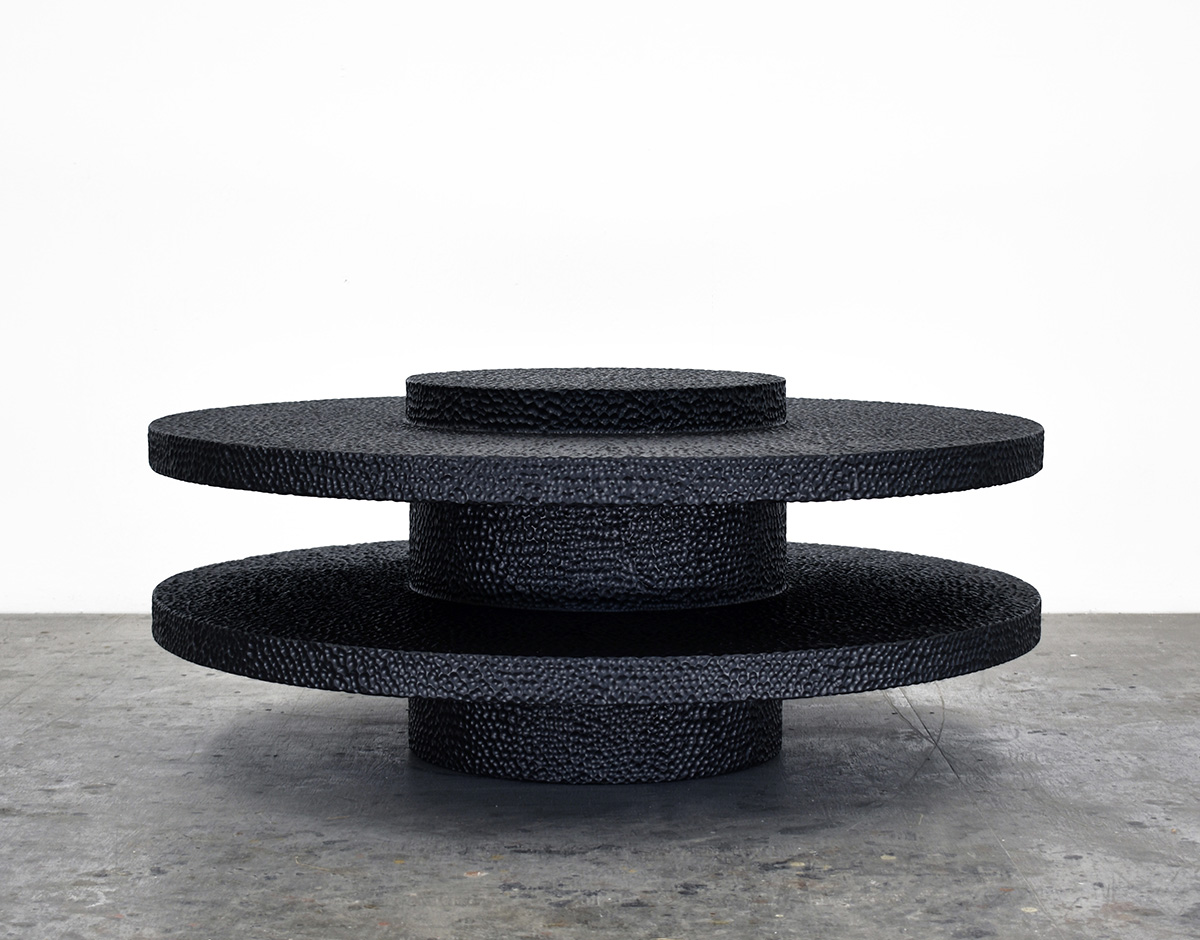
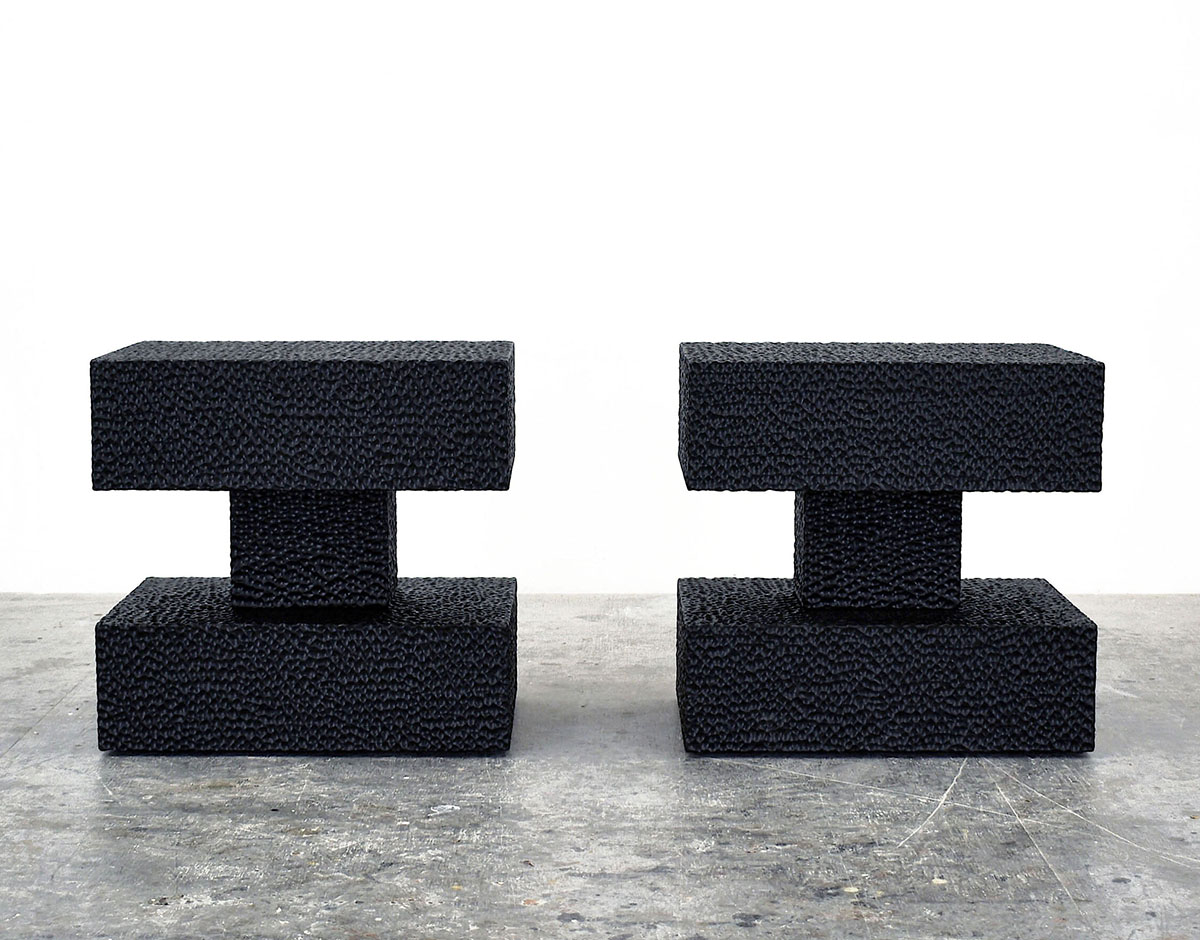
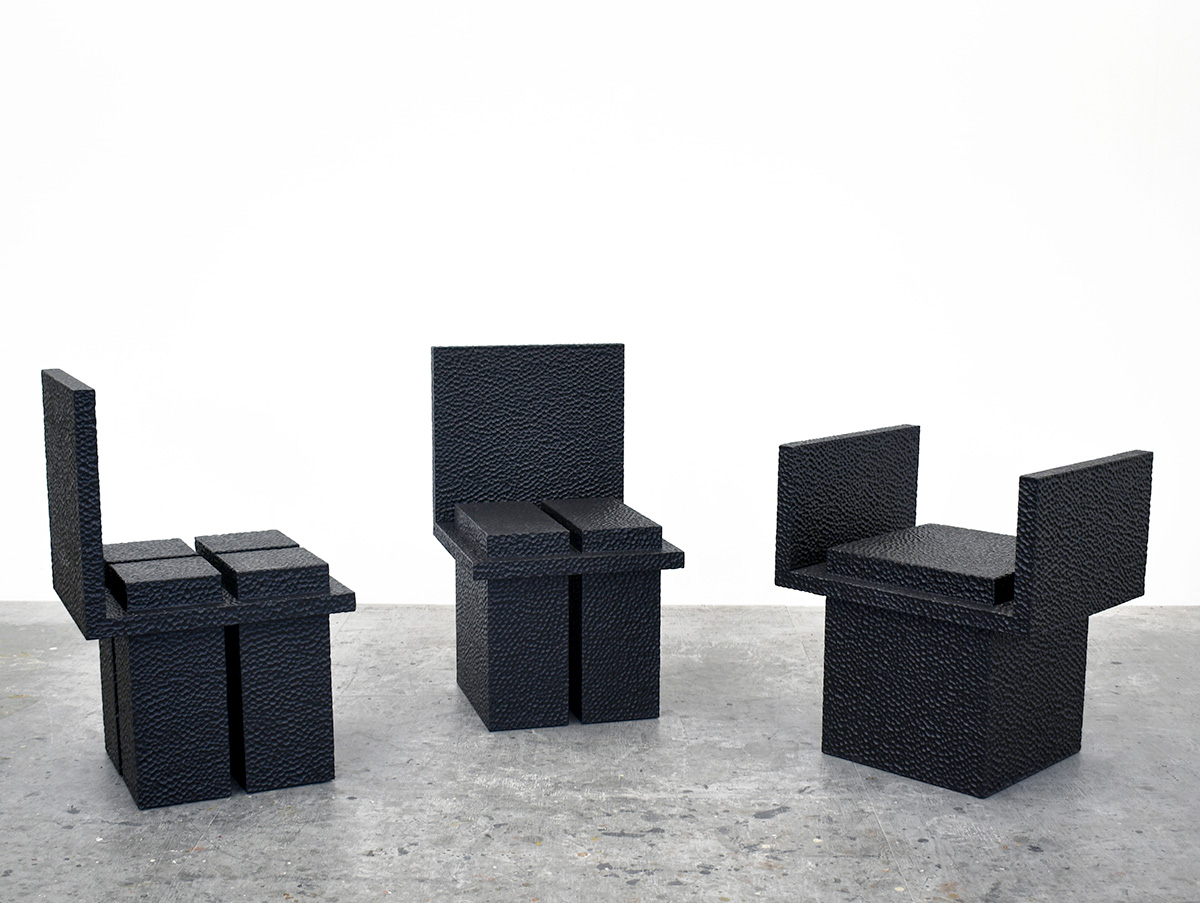
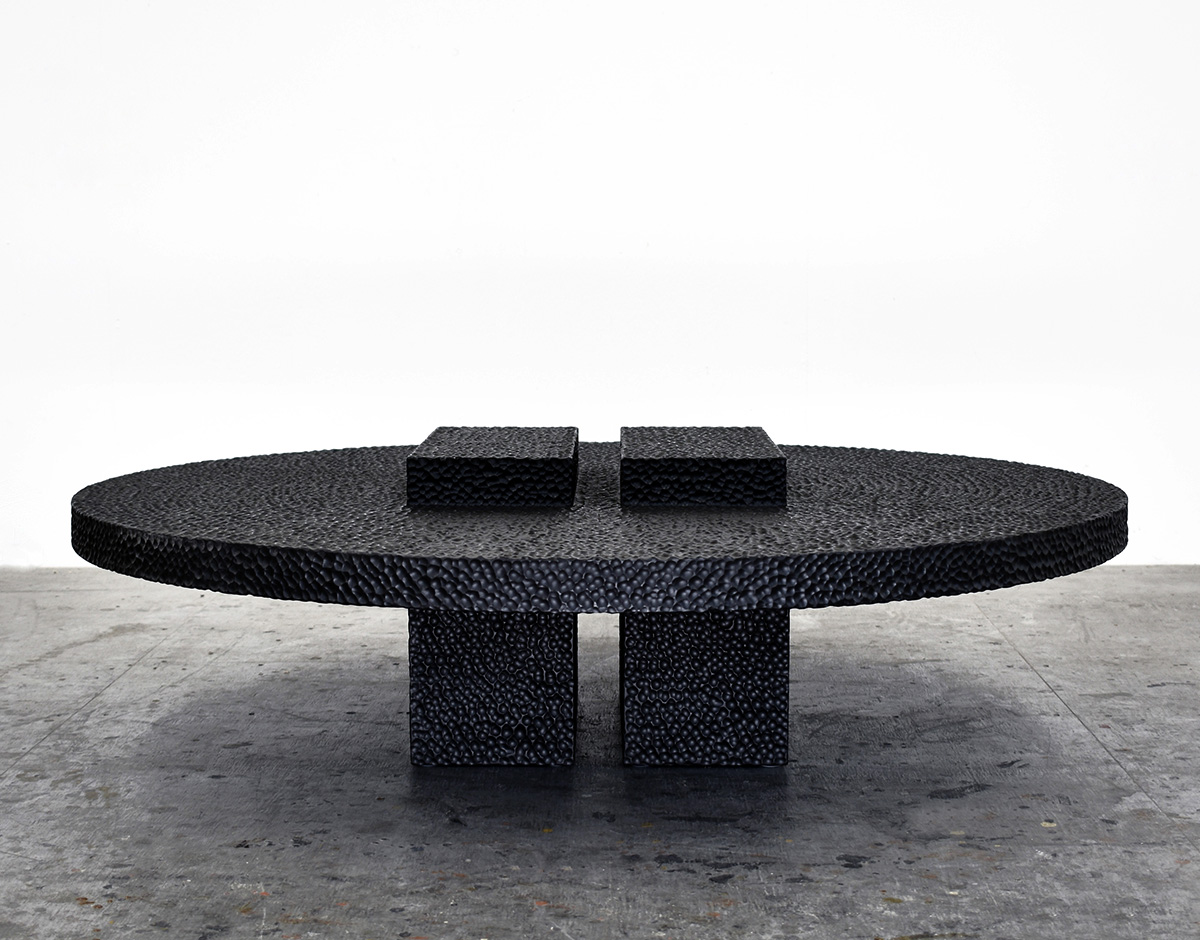 Newfield, New York, johnericbyers.com
Newfield, New York, johnericbyers.com
We’ve been intrigued with Byers’s work ever since we first saw it at ICFF many years ago, when we thought his Brutalist tables and chairs were made from cold, hammered steel only to find out they were hand-carved in blackened maple. Byers trained at Wendell Castle’s school in the 1980s and has been honing his spare yet highly tactile aesthetic ever since.
What is American design to you, and what excites you about it?
When I think of American design, my first thoughts are of the iconoclasts: the architects Frank Loyd Wright and Buckminster Fuller, the furniture designers Charles and Ray Eames and George Nelson, the artists / craftsmen George Nakashima and Wendell Castle, the sculptors Donald Judd and Richard Serra. They each broke through the boundaries and limitations of their time and particular mediums. I see a similar drive, commitment, and freedom of self expression in the current contemporary American design scene, and that is exciting.
What are your plans and highlights for the upcoming year?
Prior to the pandemic, I was considering a solo show (my 30th) of my latest R1x Table Series, but clearly, that was sidetracked. Instead, I’m releasing the work individually to my collection of representative showrooms and galleries. I’ve been having success in the European market and I’m looking forward to the start of a new relationship with a London showroom at the beginning of the year. Next autumn, I’m looking forward to Moderne Gallery representing my work at the Salon Art + Design in NYC and at Design Miami, as they’ve done the past few years.
What inspires or informs your work in general?
My work is informed by my personal discipline and commitment as a pragmatic idealist, striving for a perfect balance of form + surface + function. Stripping the design down to its purest, simplest form while maximizing its beauty and function. It also comes from how I approach the physicality of the work itself, with awareness of and by embracing the realities and limitations of my body, my craft, my materials, and using those limitations to navigate to the ideal outcome.
